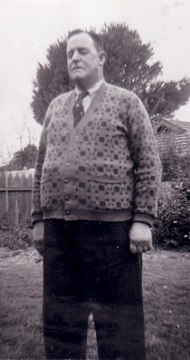
S9639
STANTON, Norman Roy
| Service Number: | 3922 |
|---|---|
| Enlisted: | 6 September 1917 |
| Last Rank: | Private |
| Last Unit: | 48th Infantry Battalion |
| Born: | Springton, Barossa - South Australia, 2 August 1899 |
| Home Town: | Springton, Barossa, South Australia |
| Schooling: | Not yet discovered |
| Occupation: | Labourer |
| Died: | Adelaide SA, 16 April 1965, aged 65 years, cause of death not yet discovered |
| Cemetery: |
Centennial Park Cemetery, South Australia |
| Memorials: | Edwardstown District WW1 Roll of Honor |
World War 1 Service
| 6 Sep 1917: | Enlisted AIF WW1 | |
|---|---|---|
| 22 Mar 1918: | Involvement AIF WW1, Private, 3922, 48th Infantry Battalion, --- :embarkation_roll: roll_number: '19' embarkation_place: Sydney embarkation_ship: HMAT Runic embarkation_ship_number: A54 public_note: '' | |
| 22 Mar 1918: | Embarked AIF WW1, Private, 3922, 48th Infantry Battalion, HMAT Runic, Sydney | |
| Date unknown: | Involvement 48th Infantry Battalion, Battle for Pozières |
Norman Roy Stanton
Private Norman Roy STANTON 3922 Machine Gun Company 48th Battalion WW1
We have all heard of “The Wild Colonial Boy”, well upon research it appears to me that young Norman Roy Stanton was in this category. Born to single mother Mary Stanton at Springton, near Mt Pleasant in the Adelaide hills on the 2nd of August 1899, he endeavored to enlist on 29th March 1916 to fight in the First World War whilst under the legal age, and upon being discovered, waited and then reenlisted. How anxious he must have been waiting at home until he could legally become a soldier and go into the wide world. He was 5ft 5 and a half inches and weighed 125 lbs with fair hair, blue eyes and very keen to get into the action.
Enlisting whilst under age, he was discharged upon discovery on 21st June that year with paperwork stating "Discharged having made false statement as to age on enlistment". He was 84 days under the legal age, but this did not deter young Norman as he reenlisted on 6th September 1917 naming Mary Ann Pitman as his stepmother and Guardian and stating his parents as deceased. Maybe this was to deter any queries as to his first enlistment. He was then only 18years and one month and this time he was successful. After due process he embarked on the HMAS RUNIC from Sydney on 22nd March 1918 with the 48th infantry Battalion.
The Battalion disembarked at London on 24th May with Private Norman Roy Stanton 3922, Machine Gun Company aboard. He was a late participant to the war effort and by the time that he had arrived in England, Gallipoli had finished and the war was almost over, hence he spent considerable time in War camps set up and around London before being shipped back to Australia without actually participating in any fighting abroad. How unsettled he would have felt, so keen and having to wait so long, and then still “no action”. This eventuated in
him having misdemeanors added to his War record file when he went Absent Without Leave on 10th March 1919 forfeiting 10 days pay for this misdemeanor and then repeating the offence a few weeks later, this time forfeiting 15 days pay. He was a determined young man and still this didn’t deter him. He was rearrested on 10th August being AWL for 5 days, handcuffed and forfeited another 10 days pay. Spending 18 days of leave in London, he returned to Australia on the ship Euripides, which disembarked at Port Adelaide. Twelve days of his return journey was spent in the ships hospital with an undisclosed illness, an illness which many young men suffered whilst serving overseas. Three years after returning to Australia he married Jessie May Twining and they had three children. Jessie was the daughter of the Twining Tea family of Adelaide and they lived in a large home with other family members near the seaside at Brighton. The Afghan people of the area would give the children camel rides on the beach. Norman worked as a farm hand for Henry Albert Twining who owned land at St Mary’s, which was eventually sold and is now known as Centennial Park Cemetery. In 1922 Norman was involved in a collision with a motor cycle while driving a horse drawn milk cart on Unley Road. The horse was injured and had to be destroyed and Norman
received back injuries. During the depression he was a milkman for Fitzgerald Dairy at Edwardstown. During WW2 he served as a Special Constable at the Keswick Barracks and later in life served in the Barracks as a night watchman retiring from there in 1963. Grandson Chris Wells remembers going down to Keswick Barracks with his Gramps and waiting in his office whilst he checked the premises. When his wife Jessie passed away in 1949 at the age of 52, their house was sold and Norman lived with his children until his death in 1965. He was a well known identity riding his bike around the streets of Brighton.
Submitted 13 September 2014 by Marcelle Edwards









